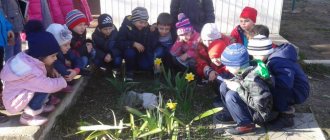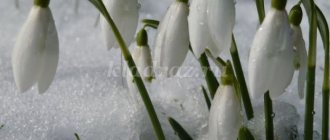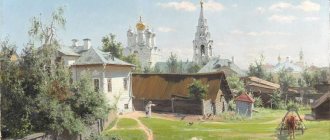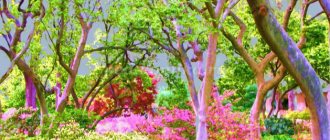From birth, children are surrounded by various phenomena of inanimate nature: on a summer day they see the sun and feel the warm wind.
On a winter evening they look with surprise at the moon, the dark sky filled with stars, feel the frost pinching their cheeks... They collect stones, draw on the asphalt with chalk, play with sand and water - objects and phenomena of inanimate nature are part of their life activity, are objects of observation and play.
This circumstance makes it possible to systematically and purposefully familiarize preschoolers with the phenomena of inanimate nature. Moreover, this is simply necessary, especially if the preschool institution is engaged in environmental education.
In nature, everything is interconnected: plants, animals, soil, rivers, air, etc. are in inextricable unity - living nature
cannot do without
lifeless things
.
The plant exists only because it penetrates the ground with its roots and absorbs moisture and nutrients from it, stretches its stem upward, and turns its leaves toward the sun, absorbing its light and heat. The plant needs air, moisture and warmth - in such favorable conditions it feels good: it grows, blooms, bears fruit and pleases the human eye.
The same can be said about animals: they, like plants, have vital needs, many of which can be satisfied only with the help of inanimate nature. All animals breathe air, need water, and a comfortable temperature. Animals are adapted to live in a certain external environment: some were born in water and remain in the river, sea, ocean all their lives - they swim perfectly. Others managed to master two spaces, for example, all land-air animals (birds, bats, flying insects) have wings for flight and legs for movement on a solid substrate; amphibians have mastered aquatic and terrestrial space (for example, a frog). There are also especially “capable” ones: they can move in three different environments - in water, on land and in the air. An example is a goose: it walks and runs on the ground, swims and dives in a pond, and flies quite well (wild geese are migratory birds). Thus, animals, as part of living nature, have their own special relationships with inanimate nature.
Humans have an even stronger connection with inanimate nature than plants and animals. People need fresh air, for life and farming they need water, but not any water, only clean water - natural or specially purified. Humanity has reached such heights in the development of civilization because it has learned to use natural resources: extract coal, oil, ore, use clay and sand in construction, making household items...
Thus, all phenomena and objects of inanimate nature that surround a preschooler are the subject of a unified system of environmental education.
In the program “Young Ecologist” (see the book: Nikolaeva S.N. Young Ecologist: the program and conditions for its implementation in kindergarten, - M.: Mozaika-Sintez, 1999) the first section is called “Inanimate nature - living environment plants, animals, humans." It includes the following subsections: “The Universe (Universe)”, “Water”, “Air”, “Soil and Stones”, “Seasons”. Each of them presents two tasks: to introduce preschoolers to the phenomena themselves, their features, properties, characteristic features (first task); show their connection with living nature, demonstrate their significance in the life of plants, animals and humans (the second - environmental - task). The solution to the first problem in most cases is traditional (for example, children have always been introduced to the properties of snow, water, etc.), and the interconnected solution of the two problems is a new, purely ecological approach.
Of particular note is the first subsection, which presents basic information about the universe, about the Earth and its place in the solar system - this is new information for preschoolers, it is included in the program for the first time. An experimental test in kindergartens of the technology presented below showed: modern preschoolers aged 5-7 years are ready to master this knowledge, they perceive it with great interest and emotional response. This should not surprise adults: our reality is saturated with cosmic phenomena, and humanity, as it seems to us, is reaching the level of cosmic consciousness.
The proposed material is a methodological system (technology) for preschool institutions
, engaged in environmental and pedagogical work.
It is an addition to those technologies for environmental education of children of different ages that implement the “Young Ecologist” and which were published in the magazine in previous years. Like all others, this technology is broken down by month, and in some cases by week; its peculiarity is to make the most effective use of the favorable periods of each season when working with children to familiarize themselves with the phenomena of inanimate nature.
For example, learning about the properties of snow occurs in the winter, and learning about sand occurs in the warm months; you can play with it; It is advisable to organize acquaintance with the Moon, stars, and the night sky in November, December, January - at this time the shortest day, and therefore observations on a walk, etc. are possible.
September
First and second weeks
On walks, when it is warm, teachers organize games with sand in all age groups; they introduce children to its properties and features.
Junior groups
The teacher shows the children the sandbox, names it, and says: there is sand in it (wet, suitable for playing). The sand is yellow, you can use it to make pies, Easter cakes, and cakes for dolls. The teacher shows and names molds, scoops, and actions with them. During the game he says: “ The sand is fine.”
- crumbles, wet - you can sculpt from it.” Demonstrates how to compact sand with a scoop, give it a shape, and how to pour it into moulds. You can play with the “baking” of Easter cakes: treat a doll, a bear, etc.
Games with sand are carried out many times, while the teacher develops not only passive, but also active speech of children - children understand the words of an adult, and they themselves begin to talk about sand games.
Middle group
The same sand
, as in the younger group. The teacher draws their attention to the properties of sand: it can be dry and wet (wet, damp); dry - light yellow in color, flows in a stream, does not stick; raw - much darker in color, clumps into clumps, does not crumble, and is easy to play with.
The games are held repeatedly, the teacher helps the children not only make pies, but also use them in the game (game of “treat”, “bakery”, etc.). At the beginning of the walk, he takes the children to the sandbox and invites them to determine for themselves what kind of sand is in it (dry or wet) and whether they can play with it. He invites you to observe how the properties of sand change when it is watered from a watering can, and asks you to name everything in words. In games, an adult helps children make Easter cakes, build a slide, a house for a dog, a cat, or a garage for a car. All buildings are played out.
Senior group
The teacher teaches children to distinguish and name the properties of sand: dry, wet, very wet, consists of small grains of sand, crumbles, molds, yellow (light or dark brown), allows water to pass through it well (water goes into the sand). Footprints (from people, birds, toys) are imprinted on the damp sand; from them you can find out who walked, what happened; In dry sand, instead of footprints, there are holes. It’s easy to walk on wet sand - it becomes compacted (while sand grains remain on the sole); It’s difficult to walk on dry sand—it crumbles and your feet sink.
The teacher organizes games with sand: construction games - encourages children to make buildings, structures, fences (houses with 2-3 entrances, tunnels, garage row, barnyard, etc.); “Culinary” - teaches girls, having made beautiful “baked goods”, to use them in some plot. Interesting sand products attract the attention of all children, invite them to admire the buildings, not destroy them, and come up with games on different subjects. Teaches children to use additional objects in sand construction (planks, sticks, stones, etc.), shows techniques that ensure the strength and quality of sand buildings.
The teacher conducts two observations with the children. The first is to look at a small handful of dry sand on white or black paper.
The purpose of the observation is to show that sand consists of individual grains of sand, they are small, hard, uneven, and of different colors.
The teacher places paper in front of each child and gives the opportunity to examine and touch the sand (if there are magnifying glasses or a microscope, then they are used in this observation). The second is dedicated to comparing sand with river stones.
Children take stones in their hands, examine them, stroke them, squeeze them, name their properties (shape, color, hardness, surface features), compare them with sand, name their differences and similarities. The teacher explains: grains of sand are tiny pebbles, they are formed from friction, hitting large stones against each other.
In his free time, the teacher conducts a conversation with the children on the topic “Who needs sand to live?” If the children themselves name the animals living in the desert, the adult maintains the conversation, offers to talk about what they know about the desert and those who live there, supplements their stories with new information, and suggests looking for books at home with images of desert inhabitants. He gives everyone a task - to examine the inhabitants of a corner of nature and find out who needs sand to live. Then he discusses the results of the examination with the children: the birds have sand at the bottom of the cage, they peck at it, it helps them digest solid food; The fish have sand at the bottom of the aquarium, aquatic plants grow in it, catfish dig in the sand and look for food. Draws attention to the fact that sand is also necessary for plants, it creates loose soil, easily allows water to pass through, plants grow well in such soil. Inspects cacti with children (if they are in kindergarten) or finds out which of the children have cacti at home and in what soil they grow.
Preparatory group for school
The teacher conducts the same games, experiments and observations with sand
, as in the older group, making them a little more complicated. Teaches how to make various buildings and play with them. Organizes a competition for the best construction: identifies everyone who wants to participate in the competition, invites 3-4 people to unite, choose and discuss together what they will build. On the site (by agreement with other groups), children can build their plans simultaneously in different sandboxes. Those who do not participate in the competition become spectators - they observe the construction. After 25-30 minutes, teachers and children from different groups examine the structures, praise the authors, and note the merits of each building. Participants in the competition are rewarded (everyone is given the same gift), and a victory lap is made to the accompaniment of applause.
Comparing sand and stones, the teacher draws the children’s attention to the fact that the stones are different colors and offers to explain why the grains of sand are different. He reports that there are places where the sand is almost white, light yellow; on beaches with such sand it is pleasant to relax and sunbathe.
The teacher finds out with the children who needs sand to live, who lives in sandy deserts. Children examine the inhabitants of a corner of nature, discuss who needs sand
. After a lesson about the Earth, the children look at the globe, look for the Sahara, and discuss who lives there. The teacher gives the task to look for books and pictures about life in the desert at home, bring them to kindergarten - then everyone discusses together how camels, lizards, and turtles are adapted to life in the sand. The teacher talks to the children about various adaptive features of animals: the ability to store nutrients, go without water for a long time (camel), hibernate and thus wait out the hottest time (turtles), talks about camouflage coloring “like sand”, about the adaptability of animals to movement, burying, etc.
In one of the conversations, the teacher suggests thinking about whether people need sand and discussing this issue at home with their parents. The next day, the conversation continues about how sand is used in construction (it is added to cement to obtain durable concrete products), and in the manufacture of glass. The teacher can tell you that in some places there is gold-bearing sand - it is very valuable, it is washed patiently and for a long time, collecting gold bit by bit. The teacher asks: is sand
artists? He answers himself: it is needed by those who make glass art, dishes, glass sculptures, and jewelry for women. He talks about how some countries hold competitions for the best sand sculpture.
Third week
In all age groups (in accordance with technology), daily observations of the weather, atmospheric phenomena and work with the calendar are carried out. Throughout the week, teachers accustom children to the procedure of daily observations and teach them how to record these observations in calendars.
On sunny days, teachers draw children's attention to the sun: it is difficult to look at it - it is so bright, it gives so much light, and it also gives off warmth. Starting from the middle group, the teacher draws attention to the phenomenon of “light-shadow”, to the big difference between solar
and shady places.
Invites children to stand in the shade with their eyes closed, and then in the sun, feel the difference, and talk about their feelings. With older preschoolers, the teacher discusses these sensations from the point of view of plants, for which they constitute living conditions. Invites them to turn into plantain, dandelion, nettle, clover and say what they experience in the form of plants in the sun and in the shade, where it is better for them to grow (i.e. stand in one place for a long time). Finds out that the sun
, if there is too much of it, tires, and the shade, if you stay in it for a long time, gives excessive coolness.
All objects and plants look different in the sun and in the shade. The adult asks the children to admire their surroundings and say what looks beautiful in the sun
and what looks beautiful in the shade.
Depending on the situation, the teacher reads (but can also teach the children by heart) poetry.
V. Donnikova
SUNNY DAY
It was a sunny, beautiful day, A light was dancing on every blade of grass.
Who will catch the first Butterfly in the garden? Who will see a fish in a sunny pond?
Yellow dandelion Who will find it in the grass? Who will sing a new song today?
Wu Shao-shan, Shen E.
SHADOW
It's good to meet Auntie Shadow on a hot day! Under the green foliage I met you.
We danced in the shadows, We laughed in the shadows. It's good on a hot day to meet Aunt Shadow!
In older groups, on one of the sunny days, teachers pay attention to the shadow
of a person: her size, shape, how she walks and runs after everyone, how she disappears.
With children in the preparatory group for school, the teacher monitors the movement of the shadow (i.e., the movement of the sun): he draws a shadow (or marks it in any other way) from a “bird pole” or some free-standing tree. Do this three times during the morning walk and during the evening walk. The adult notices that the shadow
is moving.
On the next sunny day, this phenomenon is traced on another object: for example, the shadow of a fungus, a sculpture, or a swing stand. You can organize drawing on asphalt or sand
(in an open sunny place): the teacher draws a circle with a diameter of 20-25 cm, a child with an expressive outline stands in it with his back to the sun, the children outline his shadow, the teacher marks the time (for example, 10 o’clock in the morning). At 11 o'clock, the same child again stands in a circle with his back to the sun, the children trace his shadow along the contour, and the teacher marks the time. At 12 noon everything is repeated again. The teacher suggests saying what changes each time (the location of the shadow and its length), and explaining why this happens. In the evening, the experience of drawing a shadow can be continued - the children will see that the shadow is in a new place each time. If the drawing is made with chalk on the asphalt, observations can last several days - the result will be a sundial, and the children will be convinced that every day at the same time the shadow is in the same place. The teacher explains: this comes from the fact that the sun rises in the morning from the east and sets in the west in the evening.
During observations, the teacher asks the children riddles
:
Even if you chase her all day, you won’t catch her. ( Shadow
.)
From whom, my friends, is there no way to escape? On a clear day, hauntingly wanders next to us... ( shadow
).
This same week, the teacher begins to draw the attention of older children to the length of the day: he asks them whether it is light or dark outside when they go to kindergarten and when they return home, asks them to remember this state in the first month of autumn. He says that the day is still quite long, but it is getting shorter all the time, but it’s not very noticeable to us. Let's observe the same phenomenon in a month (in the 3rd week of October), let's see what happens.
Games and experiments with sand continue in all groups, the teacher supports the children’s initiative, praises successful structures, helps develop the plot of the games around them, and suggests techniques for working with sand.
Fourth week
The teacher supports any initiative of the children: playing in the sand, observing the sun, shadow, and talking about these phenomena. On sunny days, pays attention to the sun and shadow in the group - in which windows the sun appears in the morning (east side), in which in the afternoon (south side), and in which in the evening (west side). Children can observe the shadow of the window frame and its movement in space (on the windowsill, on the floor).
Teachers of middle and senior groups prepare ordinary clay.
Winter signs of winter in living and inanimate nature: list
In anticipation of the New Year, many children know that the luxurious time of year has arrived - winter. Gifts, holidays and Father Frost and the Snow Maiden are not all indicators that winter has come. Of course, it comes a month earlier - December 1st. This is a fabulous time when you can play in the snow and sculpt a Snow Woman, we see stunning drawings on the windows, and there is beautiful snowy weather outside.
In anticipation of the onset of winter, we are all waiting for a fairy tale, wish fulfillment and magic. This is how we associate cold winter. But these are not all the indicators by which one can determine the onset of such a wonderful period:
Firstly, everyone dresses warmly enough. A down jacket or fur coat is used as outerwear, people wear warm gloves and hats, and in very “severe” weather - huge scarves and thermal underwear
It is very important to dress as warmly as possible in such cold weather, because you can easily catch a cold and miss the entire winter holidays. Snowfalls are also the main characteristic of the winter period. The winter sky is quite heavy and seems to hang right above your head. There is moisture and frosty freshness in the air.
Walking or driving in winter is very dangerous; for convenience, many people wear snowshoes, and their cars are “changed” to winter tires. After all, it’s very easy to slip, and worse, to injure your leg or arm.
- If a strong wind blows and snow falls, it becomes a blizzard. It’s very exciting to watch such weather from the window, but if you get caught in a strong wind with snow, it’s quite unpleasant
- As children, we all really loved icicles. And this is another sign of winter. In other words, an icicle is a cone-shaped piece of ice that can most often be found on roofs or trees.
- Animals, birds and insects, unfortunately, can be found very rarely, because birds fly away to warmer climes, animals hibernate, and insects hide from the severe frosts that are typical for winter
- Days are much shorter than nights
Despite the cold temperatures and snowstorms, winter is a wonderful time; many games can only be played thanks to the snow that only falls in winter. Skiing, sledding, snowboarding, playing snowballs or sculpting various figures out of snow - these are very exciting and educational activities that are possible only in winter. Therefore, the winter holidays should not be spent sitting in front of a computer monitor, but rather have a great free time with friends or family.
October
First week
Teachers of the middle, senior and preparatory school groups invite children to collect a collection of stones, for which they bring any stones (river, sea) to the group. He examines stones with preschoolers of the middle group - they compare them by shape, size, color, roundness, smoothness, heaviness. Together they come up with a fairy tale, for example, “How did a stone from the sea end up in a kindergarten,” or “What did the river stone tell the fish in the aquarium?” (The teacher himself comes up with a simple plot of a fairy tale in advance, includes the children’s suggestions and statements in it.) Offers to come up with a game with stones themselves.
For older preschoolers, a lesson is held on the topic “Simple and valuable stones in nature.”
Program content.
Develop interest in stones, sensory sensations, the ability to examine stones, name their properties and features (strong, hard, uneven, smooth, heavy, shiny, beautiful, etc.).
To give an idea that stones
naturally exist in the earth, in rivers and seas, which is why they are called river and sea. They are easy to recognize: river stones are uneven, of different shapes, sometimes with sharp corners; sea stones are always round and smooth - that’s how the sea waves made them. Stones are heavy, very hard and durable, therefore they are used in the construction of buildings, roads, bridges and other structures.
Give a first idea about valuable stones that are used to decorate buildings, in the manufacture of monuments, souvenirs (granite, marble), show products made from precious stones
(women's jewelry, brooches, bracelets, etc.).
Material.
A set of sea and river stones (handout); pieces of marble and granite (preferably); illustrations depicting buildings, bridges, metro stations, monuments, in which marble and granite details are clearly visible; several souvenirs or women's jewelry made of precious or semi-precious stones; a piece of wood, nails, a hammer, a large jar of water.
Approximate course of the lesson
Part 1.
Each child looks at the stones
compares them. The teacher asks the children to stroke, squeeze, and weigh the stones in their hands, asks questions, and suggests looking for the correct and different words to define properties. Then he demonstrates experiments with stones: he puts them in a jar of water - the children watch them fall to the bottom; tries to hammer a nail into a stone - shows how the nail is bent (stone is harder than wood).
2
.
Children look at a mini-exhibition of postcards and illustrations depicting architectural structures made of marble and granite, the teacher draws attention to their beauty, shows these stones, and talks about the fact that they are necessary for construction.
3rd part.
The teacher shows souvenirs, women's jewelry, talks about the beauty of stones and their special processing. Gives the task to look at her home with her mother at home, her decorations, artistic products made from stones, find out what they are called, admire them, and ask how they were made. (The next day, during a walk, the teacher discusses their impressions with the children.)
Before the weekend, he invites parents to take their children to an exhibition, an art salon, a souvenir shop and show them stone products, name some of them (malachite, jasper, lapis lazuli, etc.); show children on the street granite and marble details of architectural structures, a monument made of granite.
Second week
Teachers of all groups introduce children to ordinary clay
.
Starting from the middle group, they find out from children how clay
differs from sand (it does not crumble, is dense, can be wet and dry; wet clay is sticky, viscous, soft - you can sculpt various objects from it; dry clay is hard, like stone, but not so durable - when hit or dropped, it breaks into pieces).
With older preschoolers, teachers discuss the following property of clay: unlike sand, it does not allow water to pass through, absorbs it and becomes soft. During a walk, the teacher and the children walk around the territory of the kindergarten, find places with a predominance of sand and clay in the soil, ask them to think and say why in the first case there are no puddles from the autumn rains, and in the second, the water stagnates.
In all groups, children practically learn the properties of soft clay
- sculpt various products. With younger preschoolers, the teacher creates a collective work “Vase with apples” or “Dish with tomatoes (potatoes)”: each child crushes clay and rolls a ball out of it, and the teacher sculpts a dish or vase in front of the children. With middle preschoolers, the work may be similar, but everyone sculpts different fruits and vegetables, creating compositions “Vase with Fruits” and “Dish with Vegetables.” The teacher dries the molded objects, allows the children to touch them, hold them, and discover the hardness of the clay. Then he paints fruits and vegetables himself or with their help, paints a vase and a dish, and plays with these objects with the children in simple story games.
With older preschoolers, teachers sculpt more complex figures - animals, for example, “Rabbits in the Meadow.” Children of the preparatory group for school can sculpt according to the models of the Dymkovo toy. If there is a lot of clay, you can do a group work on one tray, for example, according to the fairy tale “Teremok”: the teacher sculpts a tower, and the children make different animals. You can create a “Barnyard”, “Zoo”. In any case, during sculpting, the teacher reminds how clay differs from sand, together with the children, he dries the work and paints it, and then plays with it.
In older groups, the teacher discusses the question of who needs clay for life: he recalls the bank swallows that make burrow nests in the steep clay banks of rivers.
Third week
Teachers monitor weather and atmospheric phenomena with children and keep a daily nature calendar. On sunny days, they pay attention to light and shadow, support any initiative in conducting experiments, games, and conversations.
Particular attention is paid to observations
and discussing with children the signs of a shortening day. During a walk, the teacher has approximately the following conversations with the elders: “Which of you has noticed what is happening now (in the fall) with the light part of the day? Is the day getting longer or shorter? Is the night increasing or decreasing? I don’t understand something, I feel that everything is changing, but how is it changing? Tell us who noticed what.”
The teacher listens carefully to the children’s statements, supports correct messages, and praises them for their observation and ability to tell a good story. Gives each child the task of observing what they do now in the mornings and evenings in the dark, but before (in September, in the summer) they did the same thing in bright daylight. After 1-2 days, the teacher resumes the conversation with the children, who share their observations of changes in day and night. Everyone comes to the same conclusion: there is less light and more darkness, the day is shortening and the night is lengthening. With the children of the school preparatory group, the teacher finds out whether the decrease in daylight hours affects the life of plants and animals, whether the plants on the site, birds and other animals are getting better or worse because the days have become shorter and the nights have become longer.
Spring transformation in different cultures
Nature in spring is not only about dramatic changes in the surrounding nature, but also a great holiday for the Slavs. March 22 is listed in the folk calendar as Lark Day. It is believed that it is on this date that the first 40 birds arrive every year, bringing spring on their wings. Believers hoped that their hooting on this day would attract warmth and a rich harvest. But March 22 is only the second or subsequent date for attracting spring; they often started hooting when spring itself spoke about it, the drops began, and the snow melted profusely.
For the Japanese, the blossoming nature in spring is its awakening, as for all peoples of the world. Setsubun-sai is a Shinto festival that marks the end of the long winter season and the beginning of the long-awaited spring.
In medieval Britain, spring was celebrated on the first Monday in May. On the day of the celebration, the girls washed themselves with dew, and the boys competed in archery. But not all Englishmen celebrate it, because it was on the day of the spring celebration that Robin Hood was arrested.
In any case, spring is a time of change, when the soul awakens, new sensations appear, and there is nothing more magnificent than the riot of colors of nature.
Natural hazards
These are extreme and severe climate and meteorological events that occur in all parts of the world, but some regions are considered more vulnerable to certain types of events compared to others. Natural hazards become disasters when infrastructure is destroyed and people die. These losses represent major obstacles to human development. It is almost impossible to prevent such cataclysms; all that remains is timely forecasting of events in order to prevent casualties and material damage.
However, the difficulty lies in the fact that dangerous natural phenomena can occur on different scales and at different times. In fact, each of them is unique in its own way, and therefore it is very difficult to predict it. For example, flash floods and tornadoes are destructive but short-lived events that affect relatively small areas. Other dangerous disasters, such as droughts, can develop very slowly but affect entire continents and entire populations. Such disasters last for several months and sometimes years. In order to monitor and predict these events, some national hydrological and meteorological services and special specialized centers are tasked with studying hazardous geophysical phenomena. This includes volcanic eruptions, airborne ash, tsunamis, radioactive, biological, chemical pollution, etc.
Now let's take a closer look at some natural phenomena.
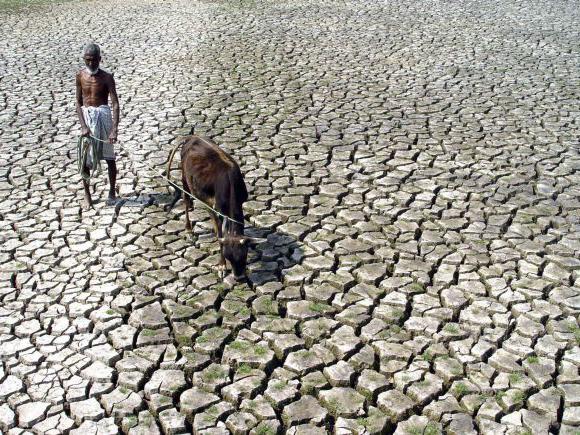
Winter phenomena: ice
This natural anomaly is directly related to precipitation. It should not be confused with black ice. These are two different concepts.
Ice is a layer of frozen water (when snow melts or after rain). Appears only when the temperature drops noticeably. It forms even at 0 degrees.
Ice is the formation of an ice crust on trees, ground, and wires, which is associated with precipitation on a frozen surface. This phenomenon occurs most often during sudden warming in the upper atmosphere.
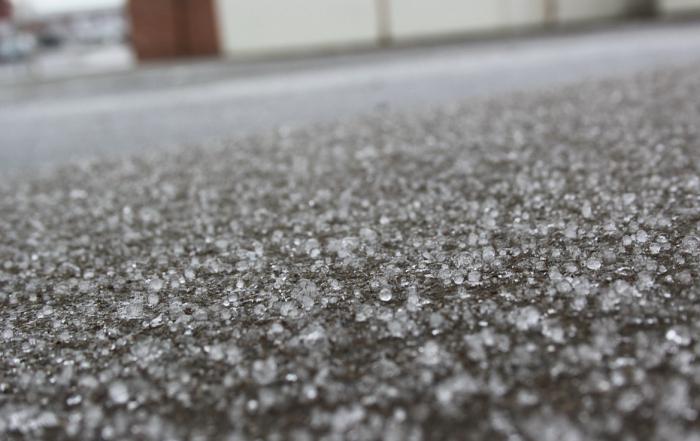
Ice is considered one of the most dangerous weather phenomena on earth, as it is associated with severe injuries and car accidents. Nevertheless, such winter natural phenomena are especially interesting and long-awaited for children, because they can skate and sled on the ice, like on a skating rink.
Ice buildup occurs in a matter of hours. But its destruction is proceeding extremely slowly. Most often, this process drags on for several days.
Natural phenomena in spring
Inanimate nature
With the arrival of spring, everything changes, even the inanimate world. The day is becoming much longer, the sun is getting hotter. The long-awaited warming is coming, the atmospheric temperature is rising to positive values. This phenomenon is called a thaw. The snow begins to actively melt, becomes loose, and by the end of spring not a trace remains of it.
Live nature
The phenomena of living nature that occur in the spring can be described in one word - revival. Everything around begins to wake up and fill with life. In trees and shrubs, the movement of juices resumes, the buds swell, a little later active flowering occurs and the first leaves appear. Coltsfoot is blooming everywhere, and other perennial herbaceous plants are blooming in the forests.
Spring is associated with new life, because during this period the earth wakes up from winter hibernation, nature begins to bloom, the first still green petals and bunches appear. This is the most wonderful time, the sun is brighter and the sky is clear, and there is freshness in the air.
It is very easy to understand exactly when spring begins; there are a large number of phenomena and processes that characterize such a season, for example:
- The first green flowers appear
- Animals wake up from hibernation
- Bunnies, squirrels and foxes again change the color of their coats, so they camouflage themselves with their environment. Many animals begin to shed
- Buds appear, and from them - flowers
- You can hear the singing of birds returning from warmer climes
- Spring is the time for the birth of a new generation in animals
- Birds begin to build nests
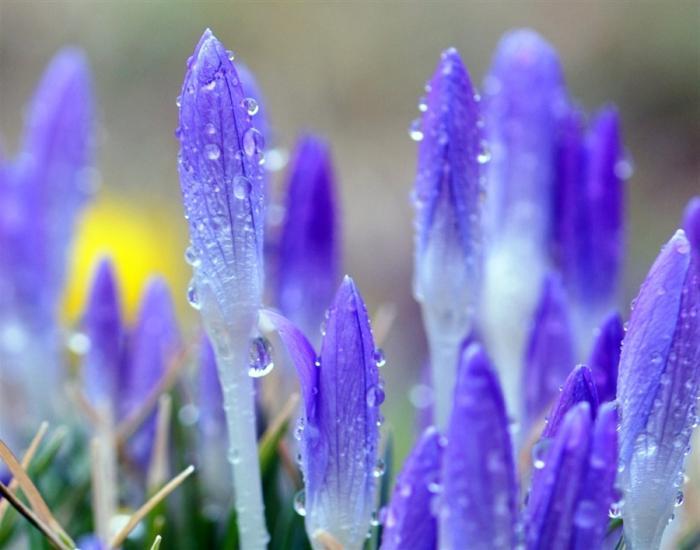
From inanimate nature:
- The first is the melting of snow
- Streams begin to gurgle
- In winter there are practically no thunderstorms, but in spring you can encounter such a phenomenon
- Ice drift - this phenomenon occurs because the ice begins to melt and smoothly moves along the rivers
After a cold winter, everyone is looking forward to warmer days. Literally from the very first days of spring, the sun's rays begin to warm up, and at the same time flowers appear, the grass turns green, the trees bloom, and the birds begin to sing. In other words, the Earth comes to life again and wakes up.
- The first sign is the snow is melting. The icicles are melting and the beautiful patterns on the windows are gradually disappearing.
- The day is getting longer.
- If in winter there are often leaden clouds, and the sky is gray and dull, then in spring the sky becomes lighter, the clouds disperse and the sky becomes clean and clear.
- Plants also react to the arrival of spring and demonstrate this by the appearance of green leaves, buds, spruce and alder blooming young cones. Flowers gradually bloom, bees and other insects appear.
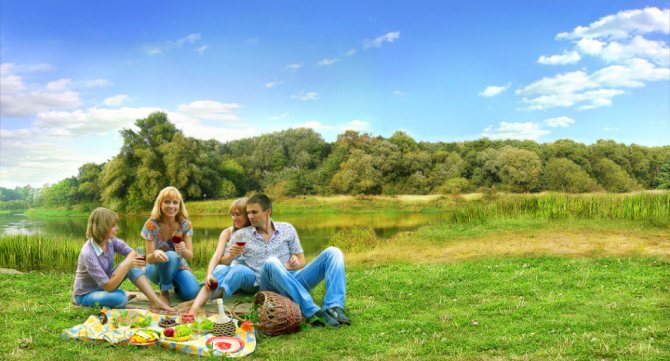
Nature comes alive in spring
- Spring is also associated with the fluffy “seals” of the willow tree; they are carried to church on Palm Sunday. Also, one of the most important spring holidays is March 8th. This is International Women's Day, and flowers such as tulips are considered a symbol.
- The birds are flying home again, and this can be heard from the beautiful singing. Swallows begin to build nests and have offspring.
- Animals change their warm clothes to lighter ones. At the same time, the color of the coat itself.
- People also change their wardrobe, hiding fur coats, warm hats and boots until next winter.
Vienna also has more exciting activities, for example, closer to the May holidays, many go fishing, pick mushrooms, start grilling kebabs and relax a lot in nature, enjoying the beautiful nature.
Objects and phenomena of living and inanimate nature in winter: description of observations
Nature is everything that surrounds us and is created by human hands. Conditionally, nature can be divided into living and nonliving. The first group includes plants, animals, fungi, humans, and microbes. But to inanimate nature: the sun, air, stars, soil, precipitation, etc.
In winter, summer, autumn and spring, all phenomena change smoothly, and this is how we can determine the seasons of the year. Winter is the coldest time of the year, but this is also the most beautiful time. In winter, the season of fun snowball fights opens, children ride on slides and sleds, make a snow woman, and most importantly, everyone is looking forward to a fabulous New Year. This time can be determined by the following signs:
- Snow is more often observed in the form of precipitation. Snowflakes fall to the ground either independently or in flakes. And also only in winter you can see snowfall - this is heavy snowfall
- Blizzard and blizzard
- Ice. Of course, all kids love to skate, but this activity is quite dangerous, so you can only play on the ice if accompanied by adults
- Icicles can be found on the roofs of houses and tree branches. Therefore, you need to be careful, and it is better not to walk under houses, because if the temperature gets higher, the icicle can easily melt and fall
- Santa Claus decorates the windows with beautiful patterns
- All rivers and lakes are covered with a thick layer of ice, which is called freeze-up
Best articles: TOP 10 most dangerous animals in the world
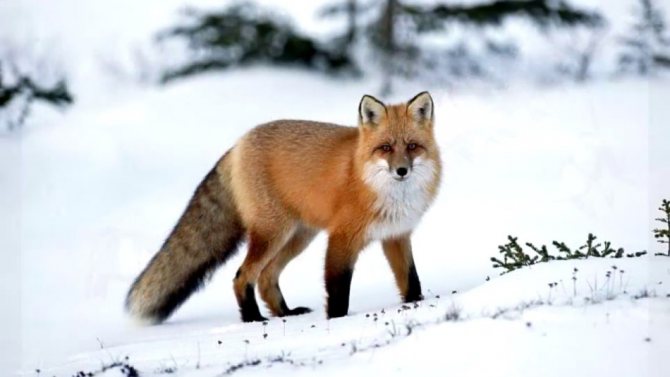
The following changes can be found in living nature:
- Many animals change their color, such as the hare, squirrel and fox
- Bears and hedgehogs hibernate
- Bullfinches and tits arrive and replace the bulk of the birds
- People dress in warm clothes
When the snow begins to melt and the patterns on the windows disappear, the sun begins to warm up, and the days become longer - then winter begins to gradually transition into another season - spring. What other signs of the spring season there are are described in the next paragraph.
Winter phenomena: snow
Precipitation in frosty weather occurs in the form of crystallized drops of water. As they pass through the cold, the moisture particles freeze, stick together, and fall to the ground. This phenomenon is called snow. It is considered the most common in terms of likelihood of occurring in winter after frost.
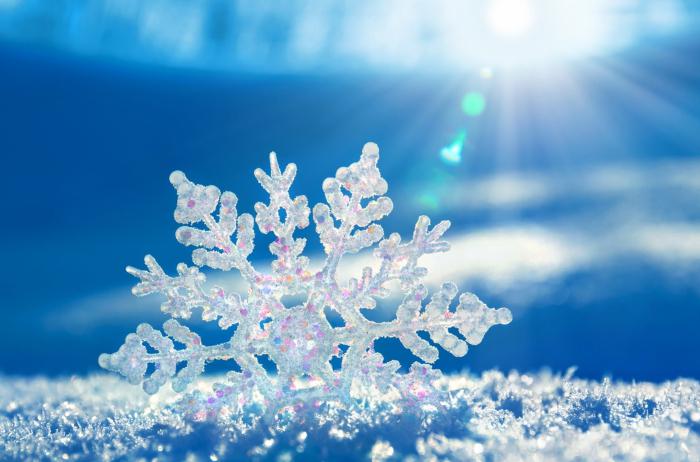
It is worth noting that each snowflake does not exceed 5 mm in diameter. However, exceptions (up to 30 mm) have been repeatedly observed in nature. Snowflakes differ in shape from each other. First of all, this concerns the interlacing of edges. Despite this, they all have perfect symmetry and clear contours. Each snowflake is a hexagon. This formation format is determined by the shape of the water molecule, which has 6 faces. That is why, as a result, ice crystals, connecting and growing in the atmosphere, create a perfect hexagon. Humidity and air temperature also affect the shape of a snowflake. The higher the first indicator and the lower the second, the larger and more bizarre the contour will be.
Snowfall in winter plays a very important role. The snowdrift flooring retains heat well, preventing plants and insects from dying in severe frost. Snow also creates a sufficient supply of moisture so that the flora can awaken in time in the spring.
Natural phenomena in winter
At this time of year there are such interesting and unusual natural phenomena as:
- Blizzard
- Black ice
- Icicles
- Frost patterns
A blizzard appears with the first gusts of wind and, boldly picking up the snow cover, carries it away into a mysterious winter dance. This is a very harsh natural phenomenon that it is better not to encounter on the way. The blizzard boldly controls the snowy landscape and arranges fluffy snowdrifts at will. Most often this happens in the middle of winter, when frost and cold reign supreme.
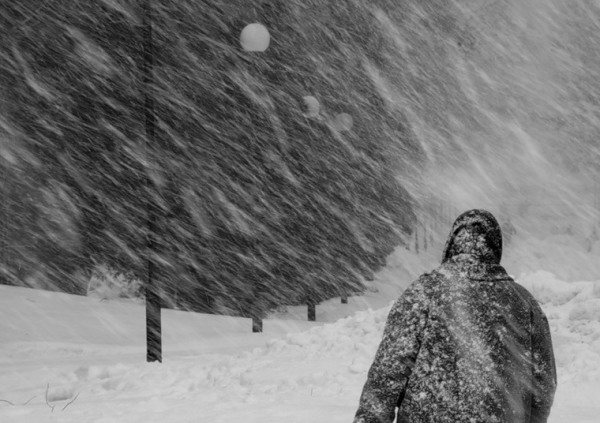
Black ice, like a sweet winter dream, binds water bodies and covers not only the continuous flow of rivers, but also all roads with a thin crust of ice. This happens if, after rain or sleet, the temperature drops below zero. Ice on the rivers prevents navigation, but provides ample scope for all kinds of winter activities, such as sledding, skating or skiing.
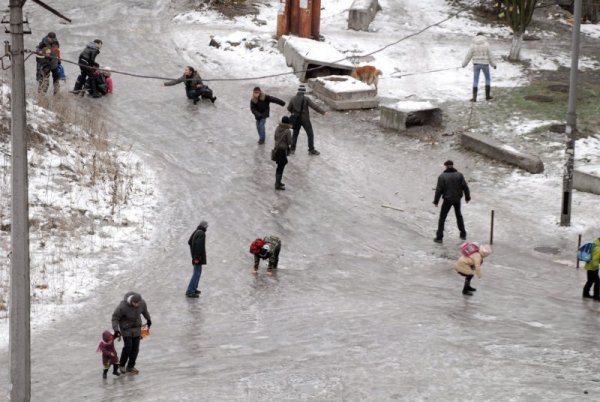
Another interesting winter phenomenon is icicles. They, like ice daggers, fall into the ground and crumble into hundreds of sparkling fragments. Icicles form when snow on roofs or other flat objects begins to melt, and the resulting water freezes at low temperatures at night.
Frosty patterns, like frost, are an incredible lace creation of winter. Their whimsical design and mesmerizing beauty leave a lot of room for imagination and immerse you in a snowy fairy tale. This becomes possible due to the formation of ice crystals settling on the irregularities of the glass. They overlap each other and create pictures of incredible beauty.
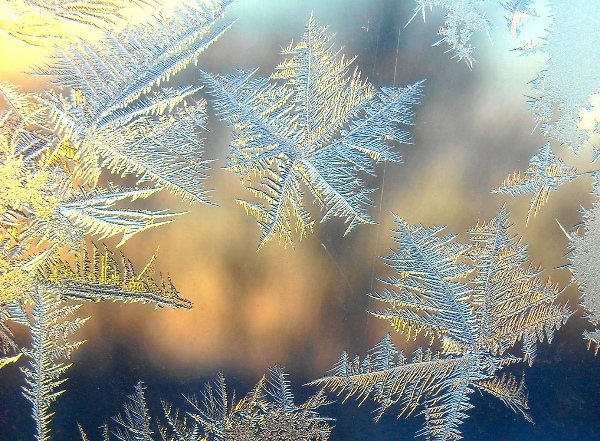
Winter is not only a beautiful time of year, but also a very unusual one. She is like a big mystery that has yet to be solved. For example:
- snow is a real work of art and there are no two identical snowflakes in the world.
- Snowflakes are 95% air, which is why they fall to the ground so slowly.
- In Antarctica you can find purple, pink or red snow.
- In different countries and parts of the world, ice has different temperatures. For example, the coldest ice is found in Antarctic glaciers and reaches -60 degrees Celsius, and the warmest (0 degrees) is on the tops of the Scandinavian mountains and the Alps.
- More than half of the world's inhabitants have never seen real snow.
- On February 18, 1979, snowfall was recorded in the Sahara Desert, which is one of the hottest places on the planet.
- You can enjoy the warmest winter in Northern Sudan. There at this time of year the temperature rarely drops below +40 degrees.
- One of the coldest and most uninhabitable places is Antarctica. In winter, the air temperature there averages -70 degrees. And at Vostok station, which is located in Antarctica, a temperature of -89.2 degrees was recorded.
Winter is a wonderful and fabulous time of year, when, despite the short days and frosty air, life does not freeze, but is filled with new light and sound. The snow-white blanket of snow and snowflakes sparkling in the sun, the unique patterns on the glass and the ice crust that binds rivers and lakes are endlessly pleasing to the eye. The prickly frost, lovingly touching your cheeks, reminds you of how many outdoor games this time of year conceals and makes you freeze in anticipation of the New Year holidays.
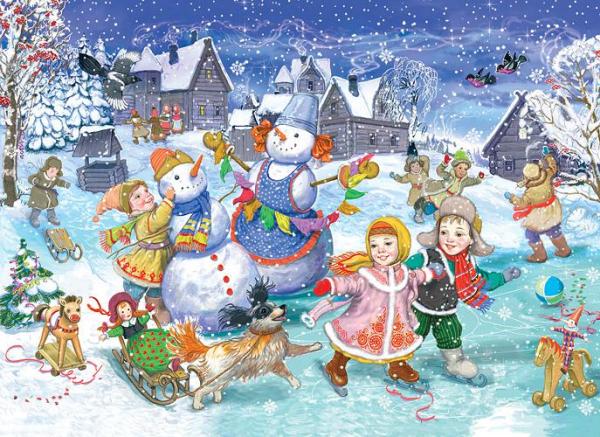
Winter is a fierce time, especially in the north of the planet. Sometimes its appearance does not coincide with calendar time. Signs of winter may appear earlier. The slushy weather changes to frost, ponds freeze, and the ground is covered with a white blanket of snow. During this period the days are short and the nights are cold.
Earthquakes
Among all natural hazards, earthquakes should take first place. In places where the earth's crust breaks, tremors occur, which cause vibrations of the earth's surface with the release of gigantic energy. The resulting seismic waves are transmitted over very long distances, although these waves have the greatest destructive power at the epicenter of the earthquake. Due to strong vibrations of the earth's surface, massive destruction of buildings occurs. Since quite a lot of earthquakes occur, and the surface of the earth is quite densely built up, the total number of people throughout history who died as a result of earthquakes exceeds the number of all victims of other natural disasters and is estimated in many millions. For example, over the past decade, about 700 thousand people have died from earthquakes around the world. Entire settlements instantly collapsed from the most destructive shocks. Japan is the country most affected by earthquakes, and one of the most catastrophic earthquakes occurred there in 2011. The epicenter of this earthquake was in the ocean near the island of Honshu; on the Richter scale, the force of the tremors reached 9.1. Powerful tremors and the subsequent destructive tsunami disabled the Fukushima nuclear power plant, destroying three out of four power units. Radiation covered a significant area around the station, making densely populated areas, so valuable in Japanese conditions, uninhabitable. The colossal tsunami wave turned into mush what the earthquake could not destroy. Only officially over 16 thousand people died, to which we can safely include another 2.5 thousand who are considered missing. In this century alone, destructive earthquakes occurred in the Indian Ocean, Iran, Chile, Haiti, Italy, and Nepal.
Examples of seasonal phenomena of living and inanimate nature
The world around us is in constant motion and changes all the time: after winter spring comes, after rain a rainbow appears, with the onset of cold weather birds fly south, etc.
All these changes that are familiar to us, which we perceive as the most ordinary and natural, are called natural phenomena.
Let's consider the phenomena of inanimate and living nature depending on the season of the year, and also get acquainted with some amazing phenomena that happen quite rarely.
Inanimate nature
The following changes occur in inanimate nature at this time of year: after the summer heat, coolness comes, and towards the end of autumn, frosts begin, and the first snow often falls. Daylight hours are becoming noticeably shorter, and cloudy and rainy weather is becoming more common.
Live nature
Representatives of wildlife perceive autumn as a time to prepare for winter. Trees change the color of their foliage and then completely shed it.
Some animals are looking for shelter where they can survive the winter cold, many of them are actively preparing food supplies for future use. Migratory birds gather in flocks and go to warmer climes.
Many forest animals, including hares, foxes and squirrels, molt and exchange their skins for warmer ones.
Inanimate nature
With the arrival of spring, everything changes, even the inanimate world. The day is becoming much longer, the sun is getting hotter. The long-awaited warming is coming, the atmospheric temperature is rising to positive values. This phenomenon is called a thaw.
The snow begins to actively melt, becomes loose, and by the end of spring not a trace remains of it. Ice drift begins on the rivers, causing floods. In some settlements located on the banks of rivers, a strong increase in water levels can lead to floods.
Also in the spring it starts to rain and the first thunderstorms appear.
Live nature
The phenomena of living nature that occur in the spring can be described in one word - revival. Everything around begins to wake up and fill with life. In trees and shrubs, the movement of juices resumes, the buds swell, a little later active flowering occurs and the first leaves appear.
Coltsfoot is blooming everywhere, and other perennial herbaceous plants are blooming in the forests. Flying insects appear, birds return, and those who hibernated are awakened. Furry animals shed again, changing their winter fur to summer.
Many animals give birth to offspring at this time of year.
Ball lightning
According to eyewitnesses, this rare phenomenon is a kind of luminous ball moving in the air along an unpredictable trajectory. In the scientific world there is still no consensus on what ball lightning is and how it occurs.
Northern lights
This phenomenon is characteristic not only of the Earth; it also occurs on other planets of the solar system that have a magnetosphere. People perceive it as a rapidly changing multi-colored glow in the sky at night. It is formed as a result of the interaction of the upper layers of the atmosphere with charged particles of the solar wind.
Snow storm
This unusual phenomenon occurs during the cold season. It is more often observed near the sea coast or over a large lake, and occasionally occurs in the city. It is characterized by precipitation in the form of heavy snow or freezing rain, accompanied by thunder and lightning.
Tornado
This destructive natural phenomenon occurs in a thundercloud. A column of air, making vortex movements and forming a funnel, descends to the ground. Its diameter can be tens and even hundreds of meters. At the bottom of a tornado there is always a cloud of dust, dirt and objects raised from the ground, or water splashes if the tornado formed over water.
Blooming Atacama Desert in Chile
This place is considered one of the driest on Earth. But once every few years, heavy rains fall on this territory, thanks to which the desert is covered with flowering grasses. Scientists have counted about 200 plant species here, many of which are endemic. During the period of rapid flowering of the desert, active reproduction of lizards, birds and insects is also observed.
